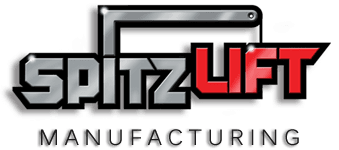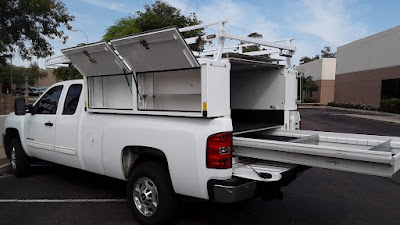Saturday, December 31, 2022
Thursday, December 29, 2022
Five AAA Rules of the Road
Tuesday, December 27, 2022
Fleet 101: What is Torque?
Saturday, December 24, 2022
Wednesday, December 21, 2022
Ford For The Builders | Built for America | Ford
Saturday, December 17, 2022
The 2022 Ford F-150®: Tougher and Smarter | F-150
Thursday, December 15, 2022
Pro Power Onboard | Ford How-To | Ford
Sunday, December 11, 2022
How Cars Communicate With One Another | Consumer Reports
Technology is allowing more and more vehicles to communicate with each other on the roadways. Consumer Reports’ expert explains what V2X is and how it works.
Thursday, December 8, 2022
FordPass™ App: F-150 Trailer Light Check | Ford How-To | Ford
Tuesday, December 6, 2022
How to back up an RV / Trailer "tail swing"
The most common piece of advice that is given to new RV owners is to go out to a parking lot and practice backing up around cones. That is good and all but HOW should you setup the cones??? The maneuvers in this video are setup to teach control of the trailer, and build confidence in the driver. The best drivers are confident and relaxed. This link shows diagrams of how to setup each maneuver. Yes these are the same backing maneuvers used to test CDL drivers. If new truck drivers can parallel park a semi truck, YOU can parallel park an RV. http://bigrigcareer.com/cdl-skills-te...
Friday, December 2, 2022
F-150 Lightning: At the Work Site | F-150 | Ford
Tuesday, November 29, 2022
SecureLatch™ Auto-Locking Pintle Hitch | Innovative Features & Benefits
Sunday, November 27, 2022
Weight Distribution Hitches Explained - How They Work, Why You Need One
Thursday, November 24, 2022
Monday, November 21, 2022
Friday, November 18, 2022
First Ever Sierra EV Denali | “Range”| GMC
Monday, November 14, 2022
SAFE STEPS Road Safety: Seatbelts
Saturday, November 12, 2022
F-150 Lightning Live Reveal | F-150 | Ford
Tuesday, November 8, 2022
SpaceKap Features: High Quality Automotive Gelcoat
Sunday, November 6, 2022
Everything You Need to Know About the All-New 2023 Super Duty
Thursday, November 3, 2022
Monday, October 31, 2022
First Ever Sierra EV Denali | “The Denali of EVs” | GMC
Thursday, October 27, 2022
All-New Ford F-Series Super Duty® Debut | Ford
Monday, October 24, 2022
Flexibility Is The #1 Reason For A Load'N'Go Slip-On Service Body
- Transferable even while fully loaded with equipment
- On and Off your truck quick and easy
- “No holes drilled” mounting
- Safely secures cargo in the bed
- Solid fixed-top safely secures cargo in the bed
- 16 gauge steel construction
- Lightweight design will work in ½ ton pickup truck
- Rugged 2000 lb. capacity deck
- Oversized double-locking side compartments
- Leave your tailgate on
- Eliminates downtime
- One truck can be used for multiple operations
- Built to outlast multiple vehicles
Friday, October 21, 2022
Hellwig Suspension - How Helper Springs Work
Tuesday, October 18, 2022
Sunday, October 16, 2022
The All-New Ford Super Duty®: For the Builders | Ford
Thursday, October 13, 2022
F-150 Lightning: Going Electric with KevOnStage | Ford
Wednesday, October 12, 2022
Monday, October 10, 2022
2024 Silverado EV – Team Chevy Meets the Silverado EV | Chevrolet
Friday, October 7, 2022
Pro Trailer Backup Assist™ with Trailer Reverse Guidance: Setup & Use | Ford How-To | Ford
Monday, October 3, 2022
E-Transit Custom by Ford Pro | Premiere of an All-Electric Icon
Friday, September 30, 2022
Fleet 101: What is Torque?
Wednesday, September 28, 2022
New 2023 Sierra AT4X | Outside & In | GMC
Sunday, September 25, 2022
Leading The Industry into The Future | Ch. 6 | This is Ford Pro™
Wednesday, September 21, 2022
A Solution for Repair and Maintenance Downtime!
How do you prepare for the unexpected?
Enter Fleetwest with alternative service vehicle solutions to help get Fleet work trucks on the road faster.
When a pickup truck is in the shop for maintenance or an accident occurs, Fleetwest service bodies are 100% transferable and able to be moved from the damaged pickup truck and onto another truck in minutes, fully loaded. With traditional bolt-on bodies, continuing to operate a work truck depends on the condition of the pickup. This means that an individual or company continues to incur expenses until the vehicle is repaired. When a vehicle and its driver aren’t working, there is a considerable financial loss per hour. These costs can be controlled with a transferable truck body because it is not dependent on the condition of the vehicle.
Fleetwest steel and fiberglass service bodies are installed with the use of lifting jacks, forklift or a crane; no holes are drilled so there is no damage done to the pickup truck or service body. Your technician can continue his service calls with his personal service body, tools and equipment until his vehicle is repaired and then the service body can be transferred back again, fully loaded. Problem solved!
To add a Fleetwest transferable service body to your fleet, call toll free at 866-497-7200.
Sunday, September 18, 2022
Versatility Helps Productivity
Fleetwest has slip-on truck bodies that can be transferred to other trucks while loaded. You can even take off your truck body and leave it at a job site with our optional jacks. This will allow your tools to stay locked and safe. Protecting your valuable cargo in a slip-on truck body makes so much financial sense. Our double locking doors and side compartments provide the security you need to prevent theft.
We have 4 different Load’N’Go models to choose from:
- Fixed Top
- Open Bed
- Sportsman
- Powerbody
They all fit most standard long-bed and short-bed models. You can transfer them in minutes with our no-holes drilled installation. Transferable truck bodies are just as the name suggests, transferable service bodies that are not bolted into the pick-up truck bed but rather clamped to the bed rails. A rubber mat is placed on the bed of the pick-up to prevent the service body from moving in the bed. Transferability changes everything!
 |
| Fixed Top |

Open Bed
Visit our website at: https://www.fleetwest.net/ . Or you call 480-736-8800 for more information.
Also, you can request a quote at: https://www.fleetwest.net/get-a-quote/
Thursday, September 15, 2022
SPACEKAP WILD – THE BEST CARGO VAN ALTERNATIVE
Tired of your unsafe and smelly old service van? The SpaceKap WILD is the ideal model for anyone looking for characteristics similar to a regular cargo van.
With a 53″ interior height, it’s large enough to move around inside, with the added advantage of full-length side doors for easy access from the outside. Maximize your space and secure your tools with an optional shelves system.
Get the Spacekap perfect for your business at FleetWest.net
Monday, September 12, 2022
SpaceKap Features: Meeting Your Needs
Friday, September 9, 2022
Four Different Load 'N' Go Transferable Truck Bodies
Fleetwest has slip-on truck bodies that can be transferred to other trucks while loaded. You can even take off your truck body and leave it at a job site with our optional jacks. This will allow your tools to stay locked and safe. Protecting your valuable cargo in a slip-on truck body makes so much financial sense. Our double locking doors and side compartments provide the security you need to prevent theft.
We have 4 different Load’N’Go models to choose from:
- Fixed Top
- Open Bed
- Sportsman
- Powerbody
They all fit most standard long-bed and short-bed models. You can transfer them in minutes with our no-holes drilled installation. Transferable truck bodies are just as the name suggests, transferable service bodies that are not bolted into the pick-up truck bed but rather clamped to the bed rails. A rubber mat is placed on the bed of the pick-up to prevent the service body from moving in the bed. Transferability changes everything!
Visit our website at: https://www.fleetwest.net/ . Or you call 480-736-8800 for more information.
Also, you can request a quote at: https://www.fleetwest.net/get-a-quote/
Wednesday, September 7, 2022
SAFE STEPS Road Safety: Seatbelts
- Wear your seatbelt - - Ensure all passengers wear seatbelts - - Safely secure children in car seats -
Sunday, September 4, 2022
F-150 Lightning Launch | Rouge Electric Vehicle Center | Built For America
Thursday, September 1, 2022
The 2022 Ford F-150®: Tougher and Smarter | F-150
Sunday, August 28, 2022
1925 Ford Model TT Truck
Thursday, August 25, 2022
Sunday, August 21, 2022
SpaceKap Gelcoat provides high UV Protection
Friday, August 19, 2022
F-150 Lightning: Cold Testing the Lightning in Alaska | F-150 | Ford
Monday, August 15, 2022
Introduction to Spacekap: The transferable Service Bodies for Pickup Trucks
Saturday, August 13, 2022
2023 FORD F-150 LIGHTNING PRO SSV | America’s First Electric Pickup Truck for Police
Wednesday, August 10, 2022
Transferability Changes Everything!
Fleetwest has slip-on truck bodies that can be transferred to other trucks while loaded. You can even take off your truck body and leave it at a job site with our optional jacks. This will allow your tools to stay locked and safe. Protecting your valuable cargo in a slip-on truck body makes so much financial sense. Our double locking doors and side compartments provide the security you need to prevent theft. We have 4 different Load’N’Go models to choose from:
- Fixed Top
- Open Bed
- Sportsman
- Powerbody
They all fit most standard long-bed and short-bed models. You can transfer them in minutes with our no holes drilled installation.
Transferable truck bodies are just as the name suggests, transferable service bodies that are not bolted into the pick-up truck bed but rather clamped to the bed rails. A rubber mat is placed on the bed of the pick-up to prevent the service body from moving in the bed. Transferability changes everything!
Visit our website at:https://www.fleetwest.net/ . For more information call our office at 480-736-8800. You can also request a quote at: https://www.fleetwest.net/get-a-quote/ .
Sunday, August 7, 2022
SpitzLift Cranes - Many Applications

SPTIZLIFT SPECS:
- Meets ASME and OSHA standards
- Components manufactured according to ISO compliance
- Made in USA
- Load capacity: 650 - 900 lbs.
- Crane weight: 36- 45 lbs.
- Lifting speed 22 ft. per/minute
- 2” strap is UV resistant and abrasion resistant
SAFETY FEATURES OF ELECTRIC CRANES:
- Safety release auxiliary handle
- Circuit breaker system for overload protection
- Dynamic and disc brake dual load control system

Learn more about SpitzLift: ABOUT US
SpitzLift Product Catalog
Wednesday, August 3, 2022
SpaceKap - Inside the Kap: Compak
Sunday, July 31, 2022
SpaceKap Delivery Service Configuration Has 372 Cu Ft of Space!
Thursday, July 28, 2022
The Beauty of Truck Body Transferability
Monday, July 25, 2022
Building the Optimal Work Truck
When you’re building a work truck, there are numerous specs that need to be factored correctly to avoid costly oversights. Make sure you consider a vehicle’s operating guidelines and payload requirements. A smart fleet manager should talk with the people in the field to understand what type of service the vehicle is expected to perform and how it needs to be used. During that discussion with the technicians, you may discover problems that they have encountered in their everyday use that may have been over looked.
- Slides make accessing supplies easy and painless
- Cabinets/shelving with side access provide organized storage to keep track of inventory
- Dividers and storage bins in various sizes to help with proper tool storage
- LED lighting for convenience and safety
- Ladder/material racks for easy accessibility
- Jacks






















